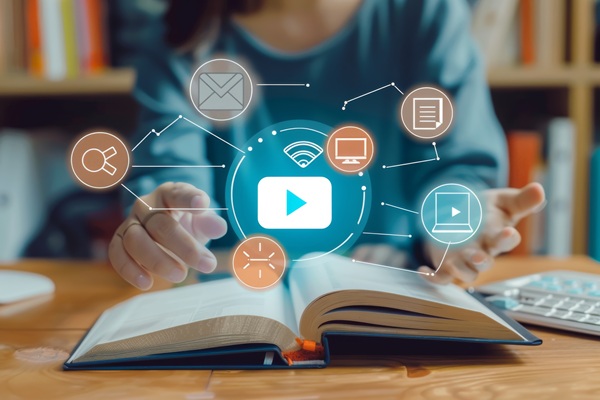Multiliteracy: the new basic skill for the 21st century classroom

We increasingly engage with texts that draw meaning beyond written words from other sources. Images, sound, video clips and gestures (alone and in combination) all play central roles in how we communicate and interpret content.
This multimedia approach is especially evident in online platforms and social media, where a single piece of content may blend written language with videos, graphics, photos and other visual elements. This change requires us to rethink what we mean by literacy.
What literacy skills do our students need to navigate rich and diverse texts?
Nearly 30 years ago, a group of scholars, the New London Group, recognised the need for a broader understanding of literacy after observing a growing gap between the literacy needs students faced outside of school and the print-based practices still dominant in classrooms.
They introduced a concept of multiliteracies which acknowledges that we now engage with texts that use multiple modes of communication. We engage with these texts in different media environments, each with their own practices and strategies.
The concept incorporates the literacy skills needed to acquire, interpret, produce and evaluate the multimodal and multimedia texts we encounter today.
For literacy education, this shift means updating classroom aims, content and activities. The group developed a pedagogical framework to help schools respond to the growing inequalities and rapid changes in technology and the textual landscape.
The process starts with examining pupils’ everyday literacy practices and experiences together. Then these practices are approached analytically by introducing a metalanguage for discussing the resources they use to create meaning. Students can use this metalanguage to critically evaluate their literacy practices which helps them understand how different modes of communication work and how to use them effectively.
The pedagogy of multiliteracies also emphasises the design and production of multimodal texts and collaborative learning in linguistically and culturally diverse groups, rather than individual reading activities.
Why is teaching multiliteracies important?
The latest PISA results showed an alarming downward trend in reading literacy. Should we not focus on traditional literacy as key basic skills? Not exclusively, for the reasons indicated below.
- Schools help pupils develop the skills they need inside and outside of school. Pupils should be able to produce and analyse multimodal texts in different situations, preparing them to work in variety of fields.
- Engaging pupils with designing multimodal texts is motivating and provides opportunities to be creative.
- Designing and producing texts makes the conventions, possibilities and constraints of different modes and meaning visible. Pupils can only critically evaluate practices they fully understand.
- Teaching multiliteracies does not exclude traditional literacies; however, it is time to expand our definition of basic skills. In the 21st century, literacy includes not only reading, writing and numeracy, but also the ability to navigate, create and interpret multimodal texts.
Multiliteracies are already included in many European curricula, and the European framework for key competencies for lifelong learning defines literacy in a way that aligns with the concept of multiliteracies. These policy documents and guidelines provide a foundation for integrating multiliteracies into literacy education.
Yet, research shows that there is still work to be done to incorporate teaching multimodal literacy practices into mainstream literacy education. While many teachers do include multimodal texts in their classroom activities, tensions between multimodal and traditional practices still exist.
Studies point out the huge challenges teachers face when they adapt their teaching to the redefined literacies, and there are concerns about teachers’ preparedness to teach multiliteracies. They need support with training and appropriate materials. Teacher educators and policy makers must ensure that teachers have substantial and concrete support.
Additional information
-
Education type:School Education
-
Target audience:TeacherStudent TeacherHead Teacher / PrincipalICT CoordinatorPedagogical AdviserSchool PsychologistTeacher EducatorResearcher
-
Target audience ISCED:Primary education (ISCED 1)Lower secondary education (ISCED 2)

